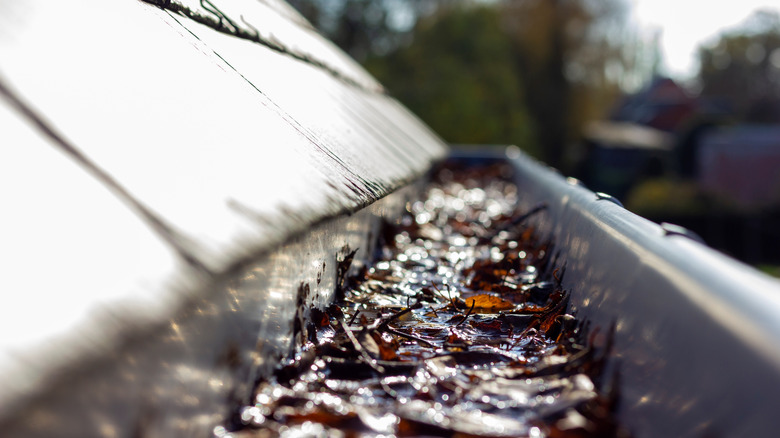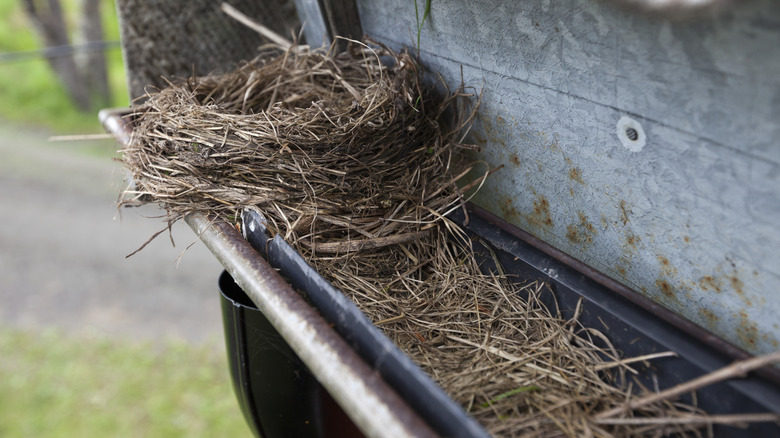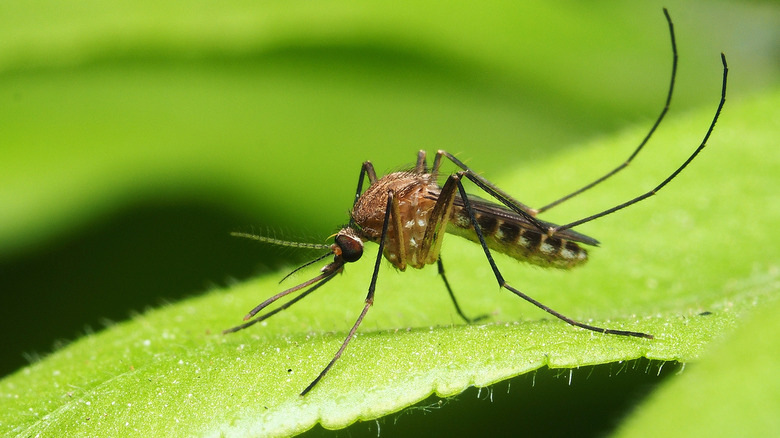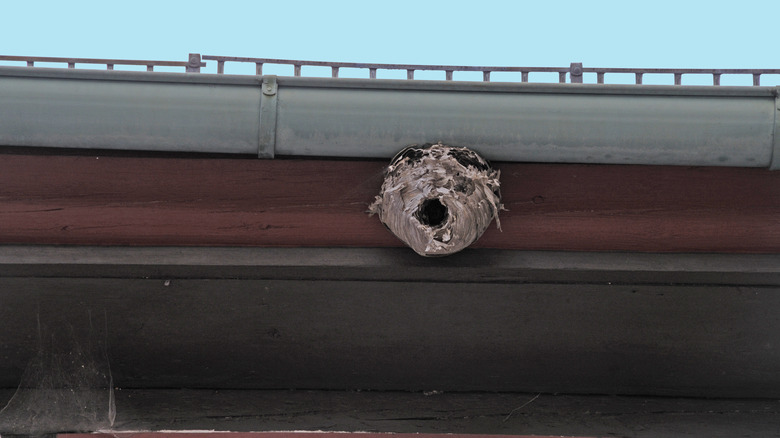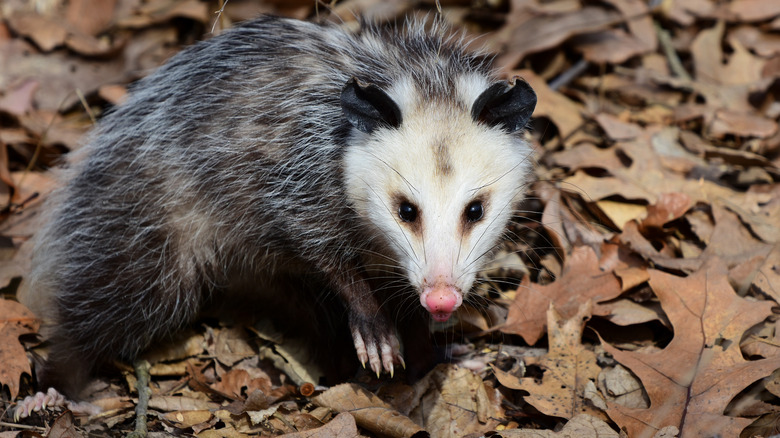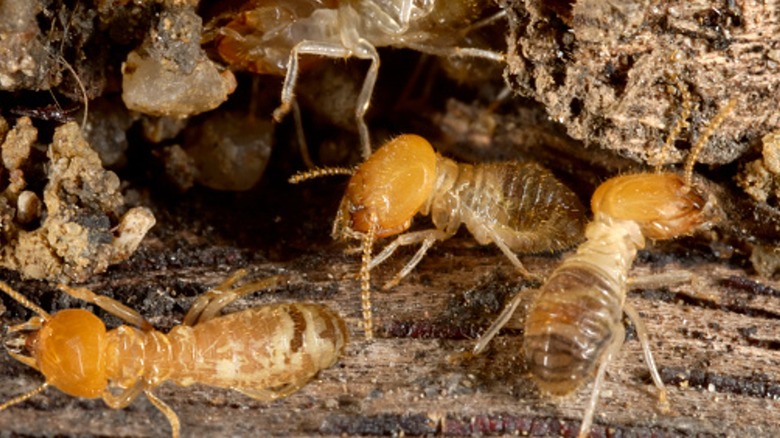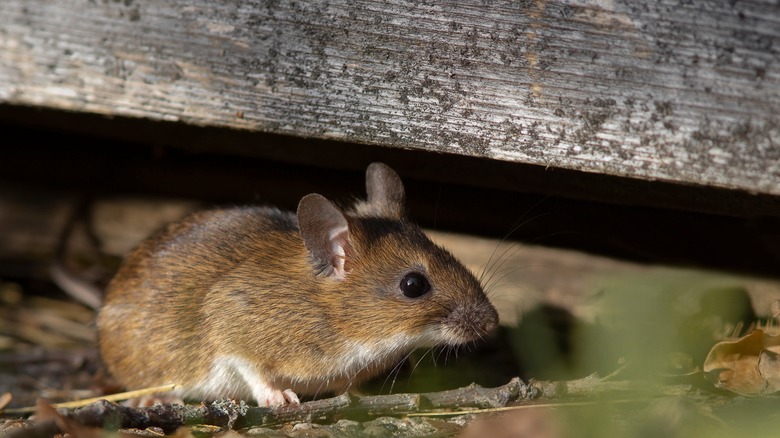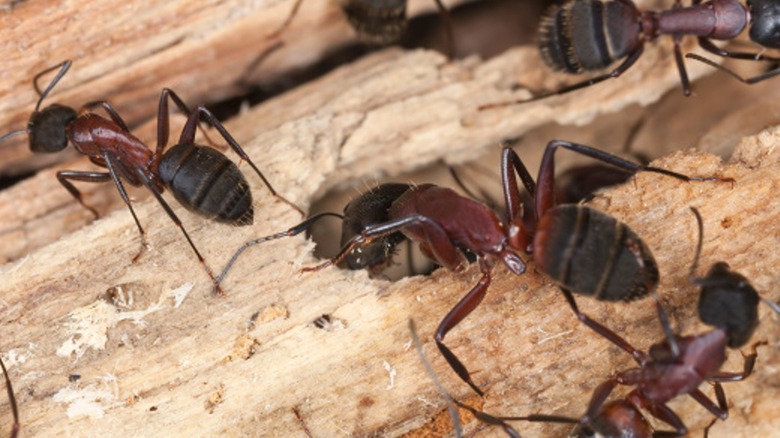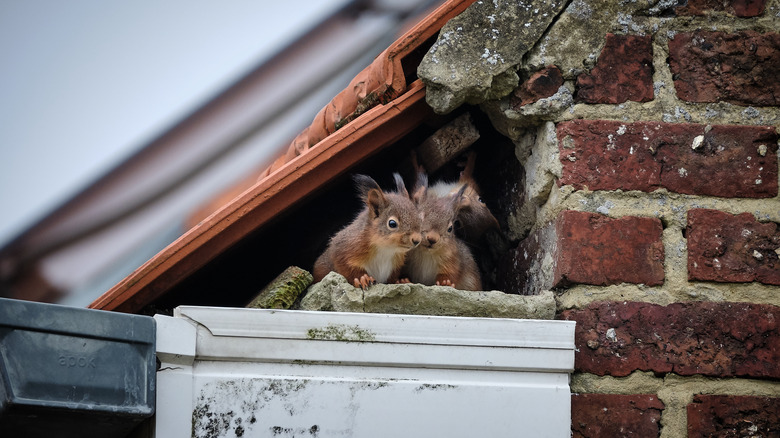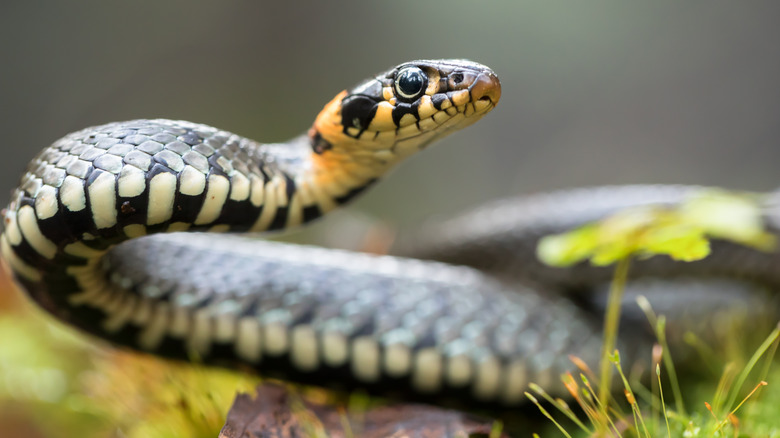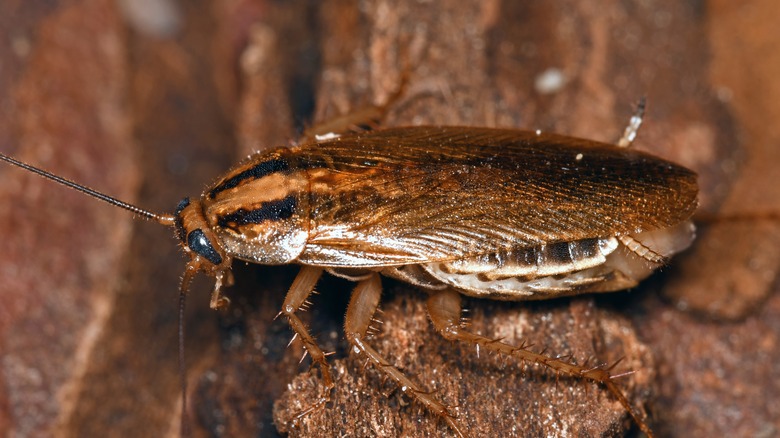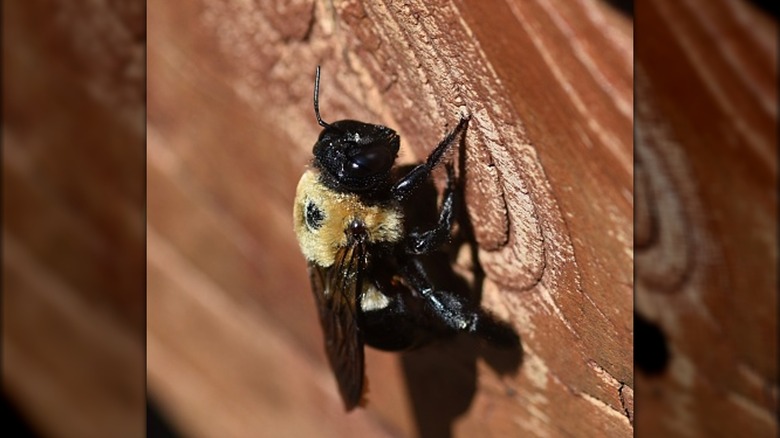11 Common Pests That May Be Lurking In Your Gutters (And How To Get Rid Of Them)
Cleaning your gutters is an important home maintenance task. If your gutters get full of debris, water won't flow properly and may flow over the edges, potentially damaging your home's foundation. But, did you know that all of the leaves and other debris that accumulate inside them — along with the pools of standing water — could actually be creating a safe haven for several pests? Mosquitoes, cockroaches, mice, and even snakes can see your damp and debris-ridden gutters as the perfect space to settle in.
If you don't want any of these or other unwanted pests making themselves comfortable in such close proximity to your home, then you'll want to keep reading. In the next few sections, we'll take a closer look at some of the most common pests that can live in gutters and, most importantly, what you can do to get rid of them and keep them from returning.
Birds may build nests in your gutters
You may have bird feeders or bird baths on your property to welcome birds to your yard. However, you don't want these feathered friends taking up residence in your home's gutters. While the birds may see the narrow opening as a good spot to build a nest, their doing so can lead to some serious problems. First, the nests can obstruct the flow of water, causing rainwater to pour over the sides, increasing the risk of damage to your roof, siding, and foundation.
So, what should you do if there is a nest in these areas? There are a few things you should try. First, before physically removing any nests that are present, be sure to look up local laws. It may be illegal in your area to disturb the structure. You might need to call in a wildlife protection group for existing nests. Then, you can take measures to prevent future birds from settling down in their problem areas by applying bird repellents such as Avian Block Repellent Pouches (and reapplying them every so often), strategically placing rubber decoys of owls, snakes, or other predators, or installing gutter covers that will deny the animal's access in the first place.
Mosquitoes like the damp conditions created by standing water
No one wants mosquitoes congregating around their home since it takes the pleasure out of sitting outside. If you've noticed an increased population of these pests, they may be hanging out in the gutters due to the standing water. The bugs lay their eggs in pools of water, so they look to spend more time around such areas.
To encourage these pests to find somewhere else to hang out and breed, you'll first need to address the standing water issue. This will likely involve cleaning the gutters to remove blockages so that water can flow freely as it is supposed to. Then, you'll want to ensure it doesn't get clogged up again. Depending on where you live, this may involve cleaning out your system on a more regular basis or looking into gutter guards to prevent debris from falling in when you're not looking. To clear an existing swarm from your roofline (especially if you can't unclog your system right away,) drop some MosquitoDunks into the gutters' puddles. These are made from the Bti bacterium, which isn't harmful to humans or other wildlife but will instantly kill mosquito larvae.
Wasps see the secluded location as ideal for nest-building
Wasps are another pest that you want to keep as far away from your home as possible. If you discover they're gathering around your gutters, it should be cause for concern and should spark you into action. Wasps often build nests in gutters because of their location — humans and other predators can't easily access these areas, so the stinging bugs view them as a safe space to live. They also look for damp and dark areas when deciding where to build a nest since it attracts insects they can eat, so it checks all of their boxes.
If you have a wasp nest in or near your gutters, the first step will be to safely get rid of it. Because of the higher location combined with the standard dangers of getting rid of these structures, this may be a job that you'll want to call in a professional for. Once any existing nests have been removed, then you can start taking measures to discourage the pests from settling back in. Keep the gutters free of debris and water to deny the flying insects the damp and dark space they desire. Setting up a more regular cleaning routine or investing in gutter guards can help you achieve this goal.
To deter wasps from building nests around your gutters in the future, you can set up fake wasp nests near your roofline. This will make them think another colony beat them to the spot, making them buzz away. You can also remove potential food sources from the area to make your home and yard less appealing to them. Steps you could take include securely covering trash cans, removing hummingbird feeds, or picking rotting fruit from trees or the ground.
Possums can make themselves at home and create nests in your gutters
Believe it or not, possums can sometimes turn gutters into their home. These pests, which are technically marsupials, may decide that the narrow and secluded gutters are the ideal spot to build a nest. And, if the mother possum sets up shop there for two weeks, she may even give birth to her babies. Possums can cause some serious damage. While they're relatively small compared to other animals, they're also a lot bigger than several of the other pests you can find in your gutters. They are heavy enough to place strain on the gutters, may bite or scratch your roof shingles, the eaves, or the siding of your house, and can leave droppings that carry bacteria and odors. Not to mention, these critters are nocturnal and can make a lot of noise when you and others are trying to sleep.
Call a professional to remove possums from your gutters. If they feel threatened, the marsupials can be dangerous and might try to bite you. Then, install gutter guards to block them from returning. It is also a good idea to cut back the branches of any trees that are hanging over your home. This will make it more challenging for the possums to gain access to your roof.
Termites love the wet conditions that gutters create
The damp and dark environment of clogged gutters can make them a haven for termites. In addition to the standing water inside the pipes, clogs cause water to pour over the sides, leaving the wood along the roof and soffits damp as well. Termites love to feast on wet and rotting wood, so the more moisture that is present, the more likely they'll be to make themselves comfortable.
If you're facing a termite problem in your gutter, you'll want to take steps to ensure that water is flowing properly through the downspouts and away from the home. Depending on the scope of the problem, this may involve adjusting the angle and placement of the gutters themselves so the water drains better, clearing blockages, or installing guards to prevent future debris buildups. You can also speak with a professional exterminator about clearing up any current infestations or taking further action to prevent a future one — such as through the use of termite baits or liquid insecticides. An example of such baits is Spectracide Terminate Termite Detection & Killing Stakes, and a recommended termite insecticide safe to use in gutters is BioAdvanced Carpenter Ant & Termite Killer Plus.
Mice can take cover in gutters and use them as a route to the inside of a home
You probably already know that mice can get into your home's basement or attic, but did you know that they may also decide that the gutters are the perfect spot to take up residence? Mice are avid climbers, and shimmying up a downspout or climbing up some wires to get to the roof is not a big deal for them. Gutters filled with leaves and other debris offer a secure hiding place for them. And, possibly even worse, once they've gained access to the gutters, getting into the home itself won't be too tricky. The rodents will look for openings along the roofline and will not hesitate to seek out the warmth and food that your home has to offer. Clearly this is something you don't want to deal with; mice are carriers for a range of diseases, can ruin your personal belongings, and can leave droppings all over your house.
If you suspect you have mice living in your gutters, contact a professional exterminator immediately before a few rodents turn into a full-blown infestation. Then, once any current problems are resolved, keep your gutters free of debris to avoid creating such a welcoming environment for the pests. You will also want to trim back any trees that hang over the roof and block access to downspouts with some chicken wire. However, if you do decide to use chicken wire, just remember to regularly inspect the openings and clean them as necessary to make sure that the flow of water isn't blocked.
Carpenter ants love the damp wood around overflowing gutters
Are your home's gutters attracting carpenter ants? If they're blocked by leaves and other debris and water isn't able to flow away from your roof, they might be. The water, however, isn't what could be attracting these pests. Instead, it could be the water damage around the system. As the water pours over the sides, it soaks the wood along the roof. This wet wood is what the carpenter ants are actually attracted to. Once they discover the compromised boards and planks around the roof, they'll do even more damage to these areas, and will also let themselves into the home through the compromised areas to cause more problems.
Clearly, carpenter ants can pose a serious risk, so you'll want to do everything you can to clear up any infestations that are present. This will likely require the help of several professionals, including a pest exterminator company to get rid of the ants themselves and a contractor or roofing company to clear the gutters and repair any damage caused by the excess water or the insects. Once you've addressed a current infestation, take steps to prevent future problems by keeping your gutters free of debris so that the wood along your roof stays dry. Taking other measures, such as installing gutter guards and trimming overhanging tree branches can also help ensure that you don't face a future carpenter ant problem by denying the pests access to your gutters. As a preventative measure, you could also consider placing bait traps — such as the Terro Perimeter Ant Bait Plus — outside of your home to head of any potential infestations before they become a more serious problem.
Squirrels like building nests in gutters
Depending on where you live, you may see squirrels in your trees and in your yard all the time. If they're in these areas around your home, they could also be making themselves comfy in the gutters as well. Like many other pests, they see these spaces as a good place to make a home. They're secluded, away from the dangers of many predators, and filled with leaves and other debris that are perfect for making a nest. However, these nests can prevent water from draining properly, and the squirrels, which are relatively large compared to other pests, could also get stuck and trapped in the downspouts. This causes further drainage problems and makes it necessary to physically remove the blockage. Plus, once they are up near the roof, they may find a way to get into the attic, where they can cause serious damage.
If you're ready to keep your gutters a squirrel-free zone, there are several things you should do. As with most other pest problems, these steps begin with cleaning the gutters to remove the debris that is making them more attractive to the animals. You'll also want to trim overhanging branches and place mesh wire to block their access to the system. Mothballs can also be an effective squirrel deterrent when placed in and around the gutters. Just remember that they are poisonous, so take necessary precautions when handling them around pets or children.
If you still find that the pests are a problem, you can try spreading predator urine around the areas they frequent to deter them from getting close to the house. Foxes are one natural squirrel predator, so consider trying one of the fox urine products from Maine Outdoor Solutions.
Snakes can hide and hunt for food in debris-ridden gutters
"You have snakes in your gutters." Now there are six words that no homeowner wants to hear. Unfortunately, this is a problem that you could be faced with one day, especially if your gutters are not kept clean. The leaves and sticks that build up in them can serve as an invitation for snakes to settle in. These tree droppings offer shelter and shade from the hot sun and warmth and insulation on cooler nights. And, even better (from a snake's point of view, of course), all the other pests that are attracted to the same environment make it easy for snakes to hunt for their food.
While there are some infestations that you may be comfortable trying to remediate on your own, the presence of snakes, particularly in the gutters, is one that will require the help of a professional. Getting up near your roofline can be dangerous, and trying to remove a snake leaves you at risk of a bite. Trying to do both of these at the same time is just a recipe for disaster and a risk that is not worth taking. Once an exterminator removes the slithering animal, make sure you clear out leaves and debris regularly and consider installing gutter guards so they won't find the shelter, warmth, and food that they're looking for.
Cockroaches are attracted to cluttered gutters and may use them to get into a home
You probably think of cockroaches as pests that are more likely to be scurrying out the dark spaces inside your home. However, your gutters could also serve as a habitat for these insects. Or, even worse, they could be the way they are gaining access to the home. If you know anything about roaches, then you probably know that they are attracted to clutter, moisture, and darkness. Leaf-filled gutters check all of these boxes, making them the perfect spot for these bugs to live. The roaches can find plenty of food and water in and around the damp leaves, and then may discover openings along the roof to get into your home.
If you already have an infestation, make sure that you address the gutters after getting the bugs out of the house. Keeping your gutters free of debris can help deter roaches from making themselves at home. You can also spray the system down with an insecticide, such as Ortho Home Defense Insect Killer. You should also have a professional inspect the roof and walls along the gutters for any openings the insects could have used to get into the house. Seal these cracks — along with any other openings in the siding or foundation — to help prevent future infestations.
Carpenter bees can drill holes in fascia boards around your gutters
Did you hear a lot of buzzing around your home recently and look up to discover large bees flying all around your gutters? If so, you might have a carpenter bee problem on your hard. Unlike other bee species, these flying insects burrow, digging holes in wood and other materials where they can lay their eggs. One area many seem to like is fascia boards. These boards go between the gutters and the roof, so they are more secluded to offer some shelter to keep the eggs safe. Carpenter bees are more likely to decide that your fascia boards are an ideal spot for them to burrow if there are lots of leaves and debris around, as those are materials they use to build. As the bees burrow into the wood, they will damage its structural integrity, so this isn't an infestation you'll want to mess around with.
If you have carpenter bees around your gutters, it is important to act quickly. Apply an approved insecticide, such as BioAdvanced Termite and Carpenter Bee Killer Plus, to get rid of the bees. Reapply about once a month during the spring when the bees are most active to keep them from returning. Alternatively, you could contact a professional exterminator to get rid of the pests for you.
Once the bees are gone, seal the holes that were left in the wood to stop other flying insects from picking up where they left off. Hiring a contractor to paint the fascia boards or other wood where they've been drilling may also be helpful, as the insects are most attracted to unpainted wood. Finally, don't forget that your debris-filled gutters may have been contributing to the infestation. So, be sure to empty them out and install gutter guards or keep up with a regular cleaning schedule.
